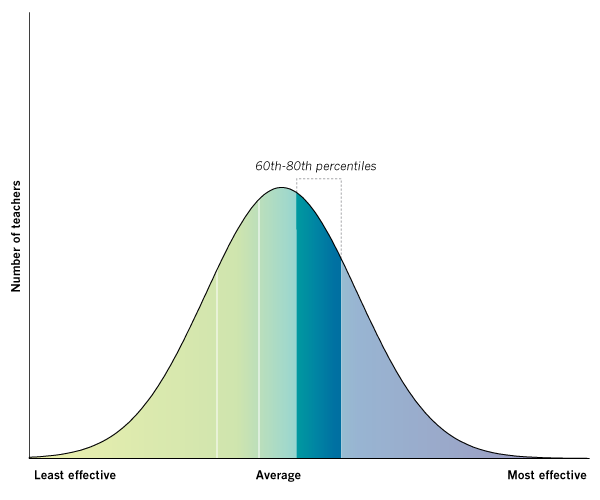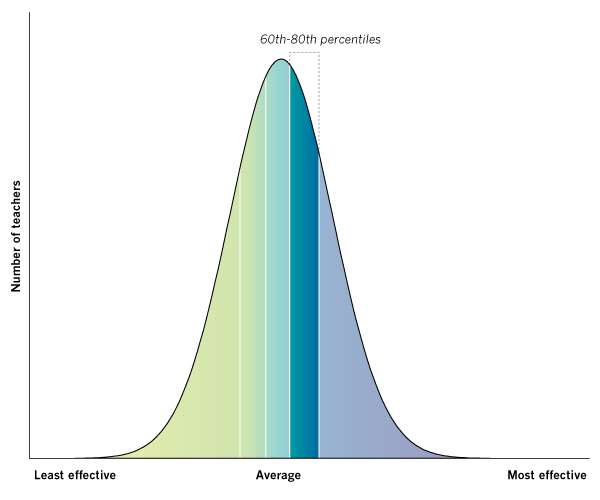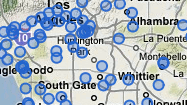Patricia Malone Schwarz
A 5th grade teacher at Solano Avenue Elementary in 2009
These graphs show a teacher's "value-added" rating based on his or her students' progress on the California Standards Tests in math and English. The Times’ analysis used all valid student scores available for this teacher from the 2002-03 through 2008-09 academic years. The value-added scores reflect a teacher's effectiveness at raising standardized test scores and, as such, capture only one aspect of a teacher's work.
Compared with other Los Angeles Unified teachers on the value-added measure of test score improvement, Schwarz ranked:
- More effective than average overall.
- More effective than average in math. Students of teachers in this category, on average, gained about 4 percentile points on the California Standards Test compared with other students at their grade level.
- More effective than average in English. Students of teachers in this category, on average, gained about 2 percentile points on the California Standards Test compared with other students at their grade level.
Schwarz's LAUSD teaching history
2002-03 through 2008-09 academic years
- Solano Avenue Elementary, 2009 - 2003
Patricia Schwarz's Response:

I am a working classroom educator who is a National Board Certified Teacher, with a MS in education from USC as well as numerous other instructional credentials.
I have taught children professionally for the last 30 years, most recently 23 years with the Los Angeles Unified School District. I work hard to achieve excellence in my teaching, both for the children in my classroom and throughout the entire school.
In 1998 the school in which I teach was identified by an independent research study, sponsored by the Los Angeles Times, as the best of the 435 elementary schools in the Los Angeles Unified District. We spent considerable time with Los Angeles Times reporters at that time to explain how, as teachers, we achieved school wide teaching and learning excellence. But the Times and its reporters never subsequently mentioned anything about our school’s teaching strategies or student achievement to their readers.
Our school has since been recognized as a California Distinguished School not once, but three times. It has been recognized as a Title One Award school five times. And last year, in 2009, the work of our teaching staff was finally recognized with a No Child Left Behind National Blue Ribbon School designation.
This June, the Times was specifically invited to visit our school for the Blue Ribbon Ceremony, which was attended by our State Superintendent of Education, and to see on exhibit in our school halls the kinds of teaching programs and learning outcomes our teachers and children have created together. They might have studied, as well, how we employ regular student test results, school wide, to sharpen our instructional focus. But not actually interested, apparently, in the hard work and complexity of teaching that make excellence in education possible, no one from the Times ever showed up.
The Los Angeles Times has now published a very dubious direct judgement on the quality of my work and professional commitment, as well as a personal attack on the reputation of many of my teaching colleagues who might work in far more challenging community environments, with the “statistically based” designation that my teaching was first “average” and now after a few weeks "more effective."
Except for a few common variations in test results for the community of children I have taught in recent years, the judgement of the Times conveyed to its readers – without any hesitation – might well have be to designate my work “below average.”
The Times has shown no hesitation in publishing these measurements knowing that VAM is flawed as discussed in Getting Value Out of Value-Added: Report of a Workshop, “If the number of students per teachers is low, just a few poorly performing students can lower the estimate of a teacher’s effectiveness substantially. Research on the precision of value-added estimates consistently finds large sampling errors. As McCaffrey reported, based on his prior research (McCaffrey et al., 2005), standard errors are often so large that about two-thirds of estimated teacher effects are not statistically significantly different from the average.“
Mr. Richard Buddin, the Rand-based author of the research study, asserts categorically at the outset of his report (P. 2) that “‘higher performing’ schools are inevitably schools with few disadvantaged or low-income students.” Last year (2009) the school at which I teach recorded an API of 915, with a total student population that was 35 percent Hispanic, and more than 90 percent of our students qualified under Title One as economically disadvantaged. No wonder the Rand Corporation has rejected any association with the study.
For better understanding of the difficulties of this form of measurement, I recommend the August 21, 2010 Wall Street Journal article, “Needs Improvement: Where Teacher Report Cards Fall Short.”
![]() The Times gave LAUSD elementary school teachers rated in this database the opportunity to preview their value-added evaluations and publicly respond. Some issues raised by teachers may be addressed in the FAQ. Teachers who have not commented may do so by contacting The Times.
The Times gave LAUSD elementary school teachers rated in this database the opportunity to preview their value-added evaluations and publicly respond. Some issues raised by teachers may be addressed in the FAQ. Teachers who have not commented may do so by contacting The Times.
|
|
 Delicious
Delicious
|
 Digg
Digg
|
 Facebook
Facebook
|
 Twitter
Twitter
|









